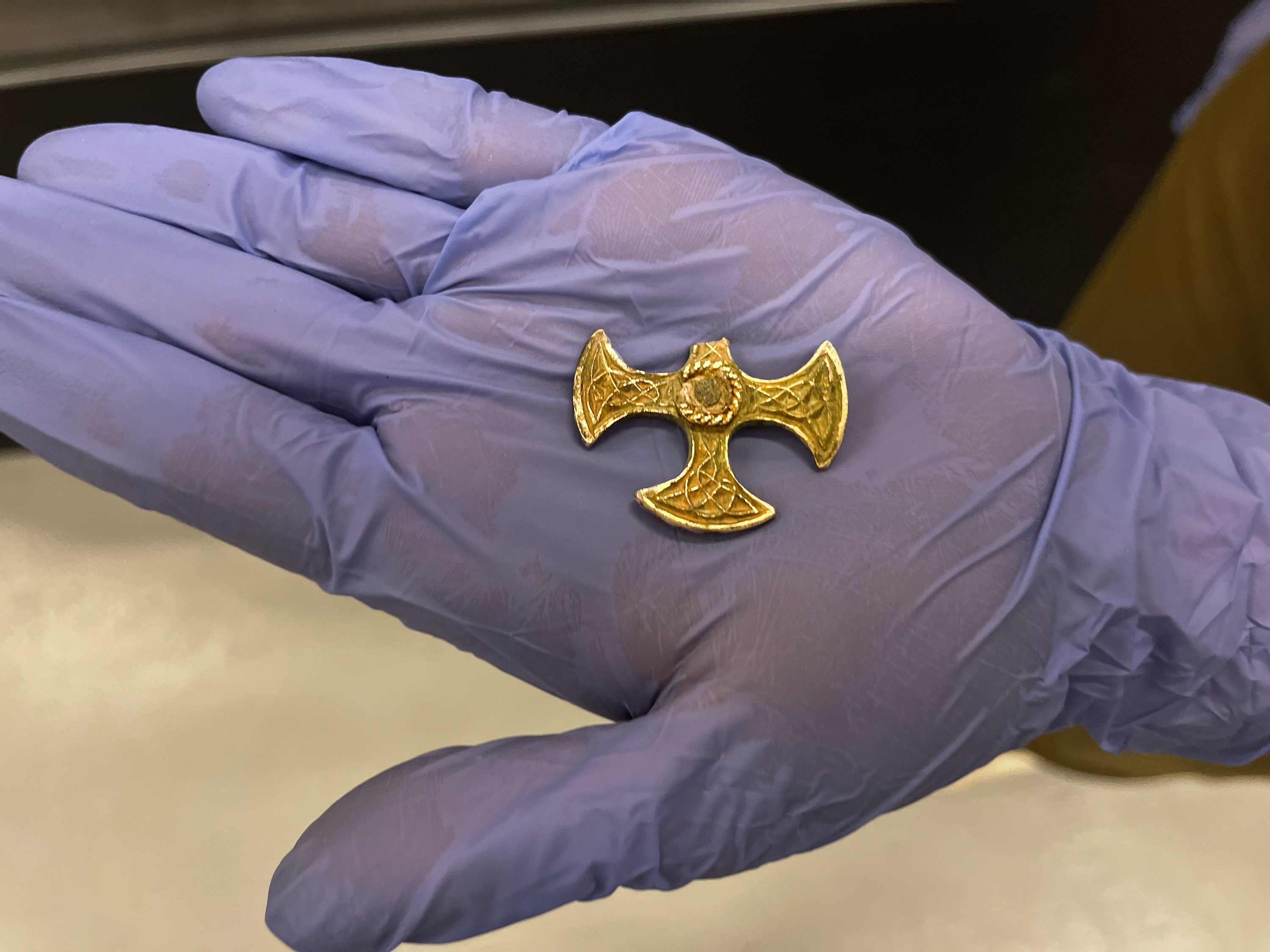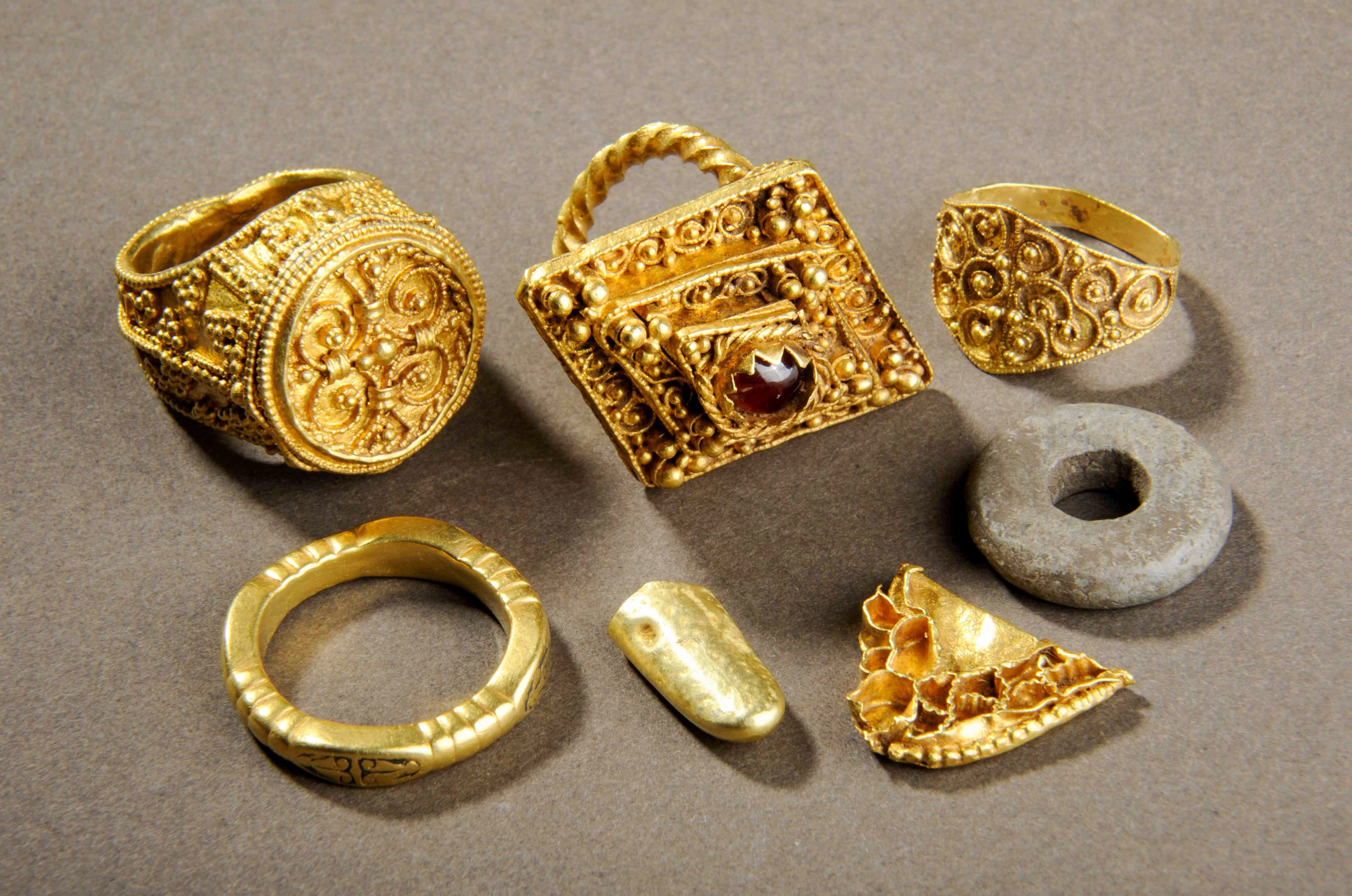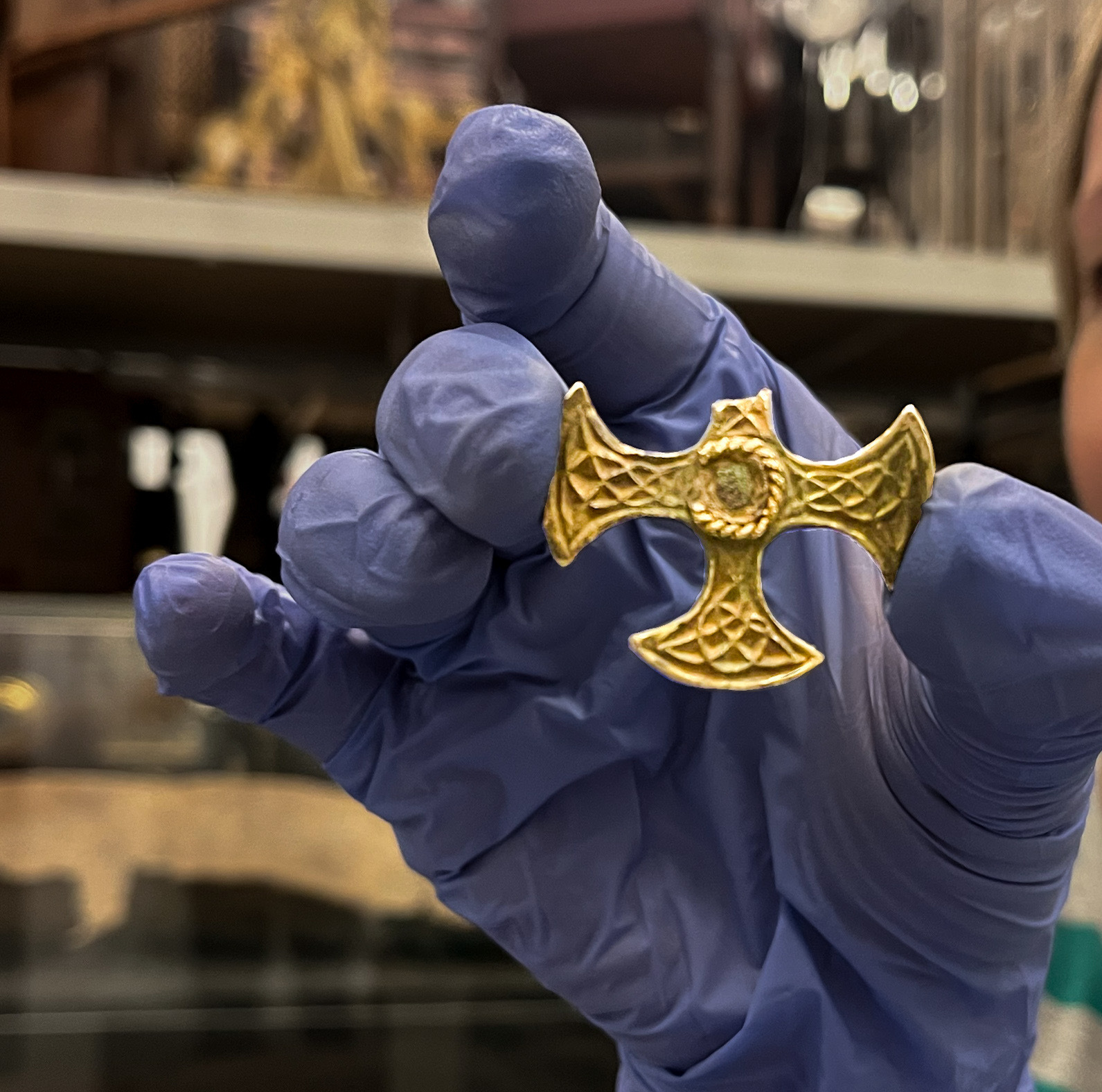A 1,200-Year-Old Saxon Cross Unearthed in Leeds: A Tiny Treasure With a Mighty Story
Published by Audrey Floyd on 11/14/25
A single sweep of a detector. A quiet field in Leeds. And suddenly, a piece of history that's been hidden for over a millennium comes back to light.
The discovery? A beautifully decorated 1,200-year-old silver-and-gold cross pendant, believed to have belonged to someone of remarkable status — perhaps a church leader, an official, or an elite figure within the Saxon Kingdom of Northumbria.
It's the kind of find detectorists dream of: rare, personal, and packed with clues about the people who came long before us.

A Badge of Office Lost to Time
Dating to the 8th century, this pendant is a stunning example of early medieval metalwork. Crafted from solid silver, covered with delicate gold leaf, and decorated on both sides with intricate interlacing designs, it wasn't simply jewelry — it was a symbol.
Experts believe it would have been worn close to the chest, suspended from a loop now missing from one of the broken arms. Even with a missing center stone and a fractured arm, its craftsmanship makes one thing clear: this belonged to someone of high status.
As Kat Baxter, curator of archaeology with Leeds Museums and Galleries, explains:
"The cross is beautifully decorated on both sides… It would certainly have been worn by someone of high status and is an outward display of religious identity."
Objects of this quality don't appear by accident.
A Window Into Saxon Northumbria

During the 8th century, Leeds sat within the powerful Saxon Kingdom of Northumbria, a region rich in trade routes, cultural exchange, and political influence. High-status objects from this era help historians map who lived here, how communities were connected, and what they valued.
And this pendant isn't an isolated case.

Its discovery joins a growing list of remarkable finds in the Leeds area:
- A 1,600-year-old lead coffin uncovered in 2023, part of a previously unknown Roman-to-Saxon cemetery containing more than 60 burials
- The West Yorkshire Hoard, a collection of gold jewelry and metalwork dating from the 7th–11th centuries, found by another local detectorist in 2012
- Ongoing discoveries that point to Leeds as a hub of wealth, culture, and authority in early medieval England
Piece by piece, these finds are building a clearer picture of the region's past — and showing just how much history is still waiting beneath the soil.
Why Discoveries Like This Matter
One of the most important insights from the museum team is also one of the simplest:
"Objects representing less wealthy people are less likely to survive."
That means the pieces detectorists recover — especially high-status objects like this cross — may be the only surviving evidence of entire communities, belief systems, and eras.

Responsible detectorists, working with programs like the Portable Antiquities Scheme, help ensure that these discoveries aren't lost again. They're documented, preserved, and shared with the public — giving future generations a chance to learn from them.
Without that partnership, many of the most meaningful finds in British archaeology would still be hidden underground.
One Sweep Can Change the Story
This Saxon pendant may be small, but its impact is enormous — a reminder that history isn't stored in books first. It's stored in the ground.
And there are still countless stories waiting for their moment.
Ready to Chase Your Own Piece of History?
Whether you're exploring fields rich with medieval layers or searching for artifacts beneath old homesteads, the right detector makes all the difference.
Explore relic-hunting detectors →
Shop multi-frequency models for deeper, cleaner signals →
Discover new tech built for historic sites →
Because the next great find may be closer than you think — and the next story historians tell might start with you.
Article Sources:
“A Metal Detectorist Found a 1,200-Year-Old Cross Pendant in a Field. Its Details Are Astonishing.”
“City’s tiny Saxon treasure has a big story to tell”
All images sourced from Leeds.Gov.UK.
